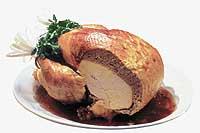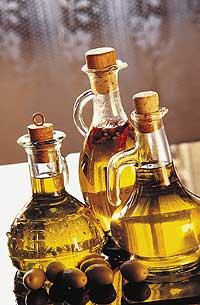Mediterranean diet

These researchers observed the biggest difference in the type of oil used in the kitchen. The countries of the Mediterranean area used olive oil and other types of oil, as in Finland animal fats were used, mainly butter.
We all know that the Mediterranean diet helps prevent diseases of our society in general. For example, the Spanish Association of Heart Physicians recommends a Mediterranean diet to prevent heart disease.
Knowing this, let's see what this diet is based on, which is the one that interests us most. It consists of three foods: wheat, olive oil and grape. These three are the basis of food for all countries in the Mediterranean area, but each village has its particularities. That is why it is a very rich and varied cuisine.
The dishes are always prepared with the resources offered by the land and are used as a complement to foods rich in proteins and fats to flavor, and not as those we use in many occasions as main ingredients. In the dishes of the Mediterranean diet the basic foods are cereals, green beans and vegetables, which are the main dish of the food and which are complemented with meat, fish and egg. For the preparation of today's dishes, we played very differently: many times we decided first what we are going to put in the second dish and then the first as a complement.
In addition, meals from the Mediterranean diet were often made with a single dish. The current philosophy of fast food is the same, but the main ingredients are totally opposite. Meat, fish and egg are essential ingredients in fast foods, while in the Mediterranean diet they are complementary.

This unique dish was very rich in ingredients such as spinach and pine nuts. With simple resources they prepared excellent dishes. Another known example is gazpacho.
In the Mediterranean diet cereals, pods, vegetables, potatoes and fruit are essential, which are used to enrich fish, mainly blue, meat and egg. Nuts are also important and are widely used in making sauces for their flavor. Besides tasty, they are the most energetic foods offered by nature. Milk or dairy products and sausages are rare in this diet.
A good complement to food can be a little wine and it seems that a non-nutritious component of the grape, resveratrol, is good for the heart. This component prevents the oxidation of LDL lipoproteins thanks to flavonoids and tannins.
Olive oil
Our ancestors considered it a gift from the gods, and already 6,000 years ago man began to consume this type of oil.
Olive oil is the only one that can be consumed without refining. Consequently, it can be of various types: virgin, refined or pomace. The first oil obtained by pressing olives collected from olive trees is virgin. It is obtained by cold mechanical processes.

Virgin oils of different qualities are sold on the market. The best are those with less acidity than one degree (higher acidity, less oil). Acidity is calculated based on the amount of free oleic acid, but has no nutritional interest. Virgin olive oil has a greener color thanks to chlorophyll and is the oil with more nutrients, mainly vitamin E, beta-carotene or agents and antioxidants of vitamin A.
In the background are refined olive oils. Refined oil is marketed alone or mixed with virgin, and in them there are also many qualities. Finally, pomace oils, with much worse quality than the previous ones.
Olive oil is separated from other oils thanks to oleic acid. Fat is monounsaturated and accounts for 63% of oil. The rest consists of saturated (13%) and polyunsaturated (10%) fats. Oleic acid has a number of advantages from a health point of view, highlighting its contribution to the reduction of levels of bad cholesterol in the body, as well as to the increase of good cholesterol levels. Olive oil therefore has several properties:
- Protects from heart disease.
- Helps digestion.
Cleans the liver and facilitates the work of bile.
It participates in the development of the brain and nervous system.
It helps prevent some types of cancer.
It also has culinary advantages. Having the smoke point higher than other oils, it resists heat action better and does not suffer harmful transformations. However, it is recommended to use the same oil up to three times. Moreover, its properties make the food when frying produce a layer around the food, preventing the oil from entering. As a result we get a lighter and less caloric meal.
Olive oil is tasty and also a source of health. Taking 60 g of oil a day, about 6 large tablespoons, we would take care of our body.





